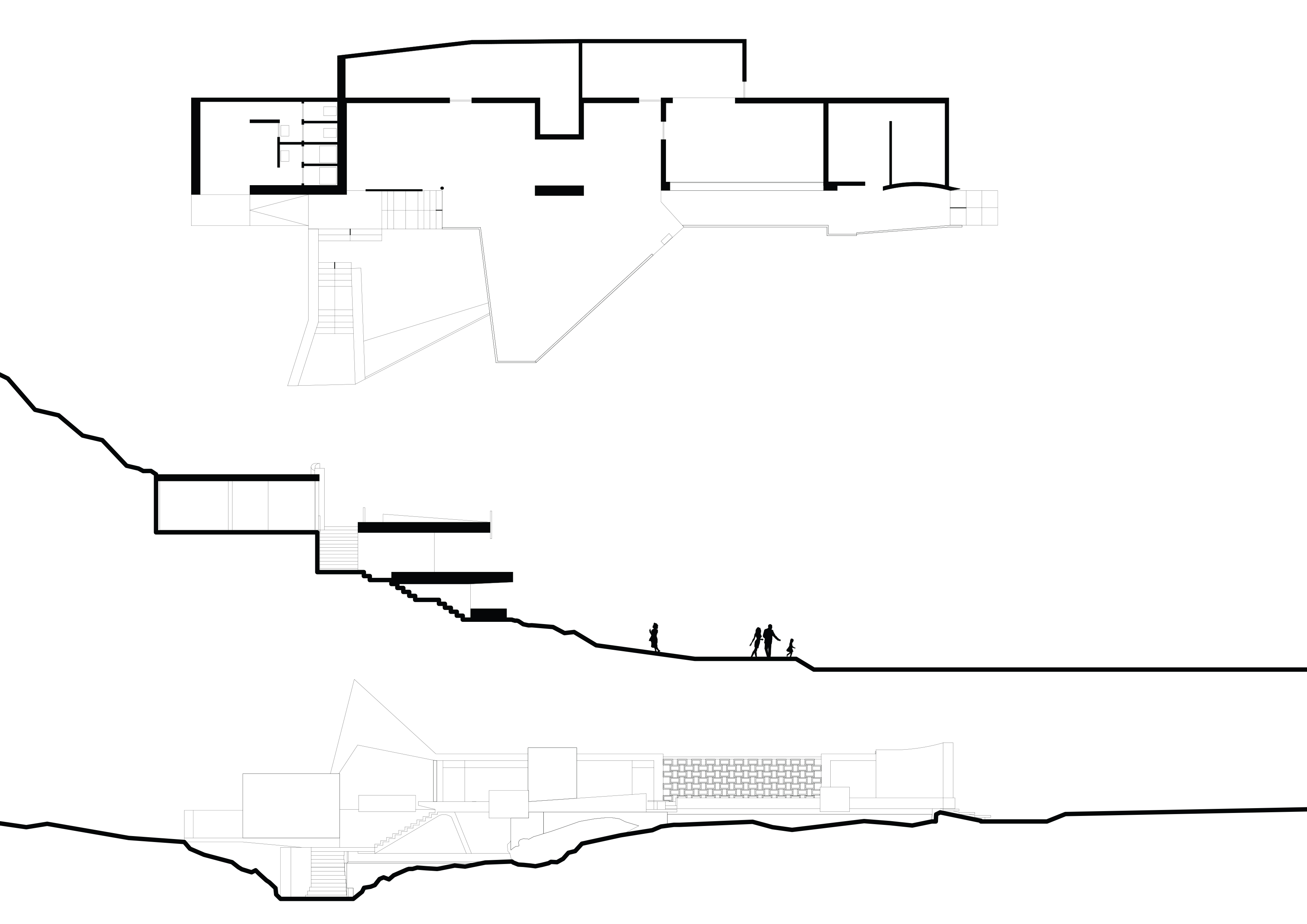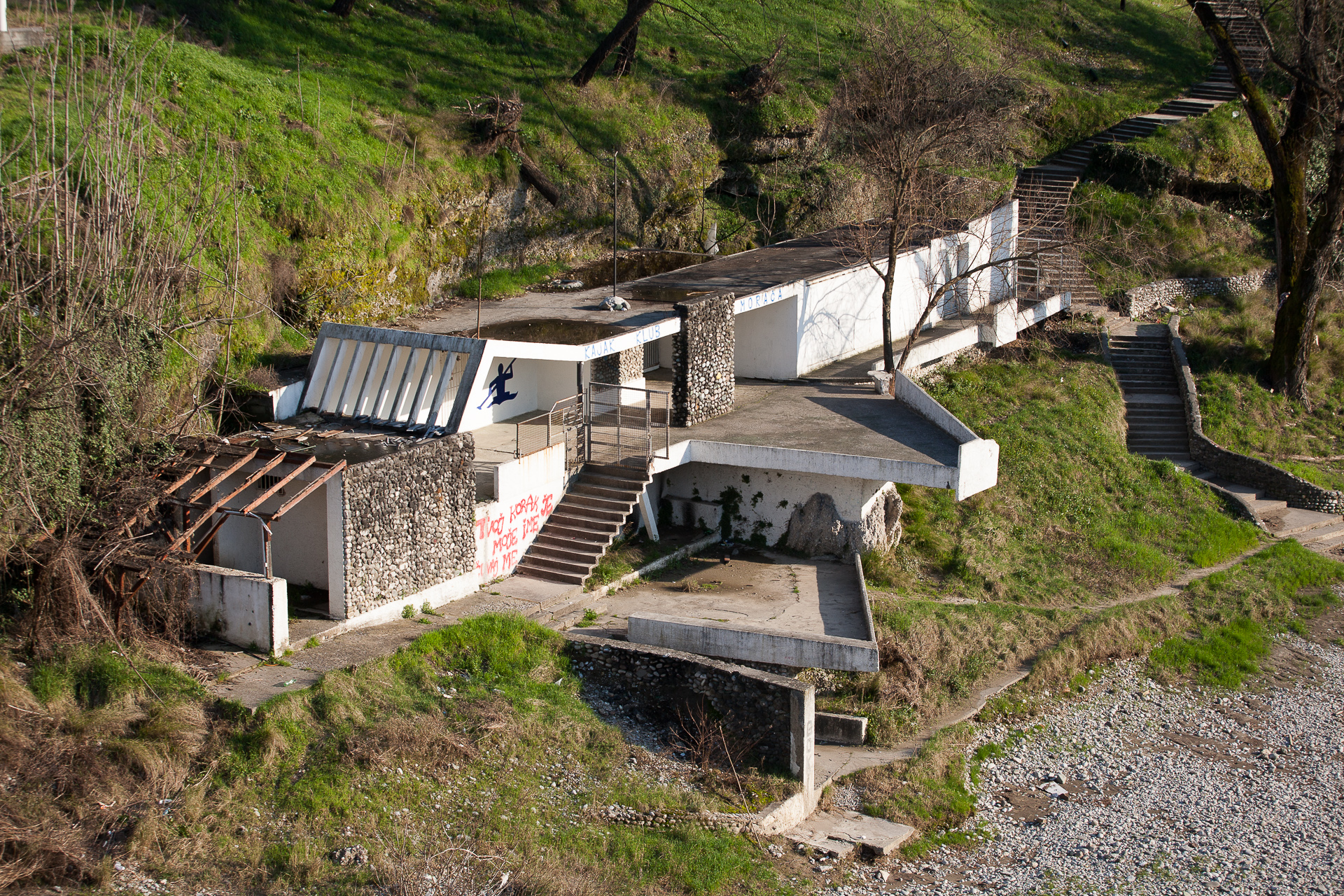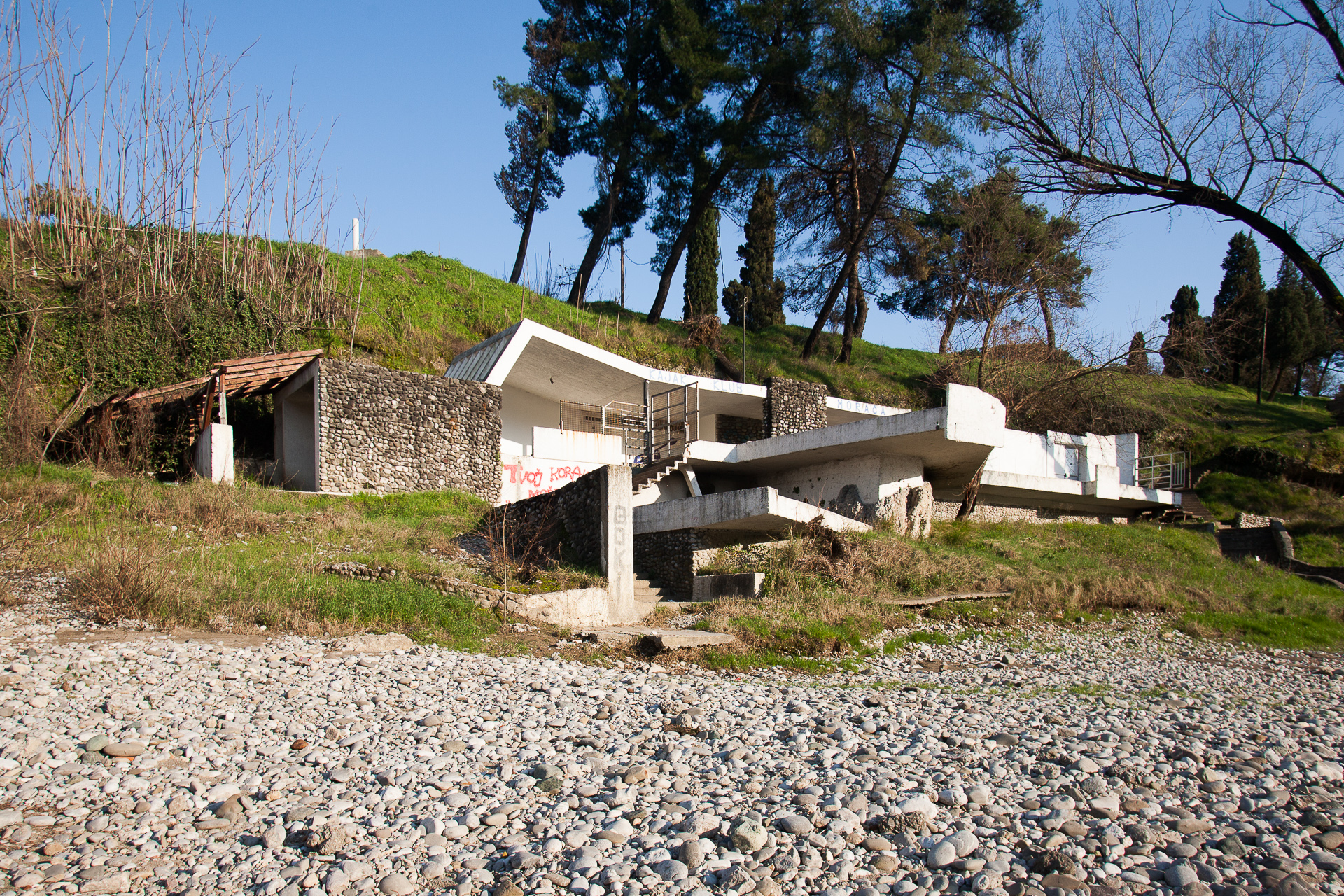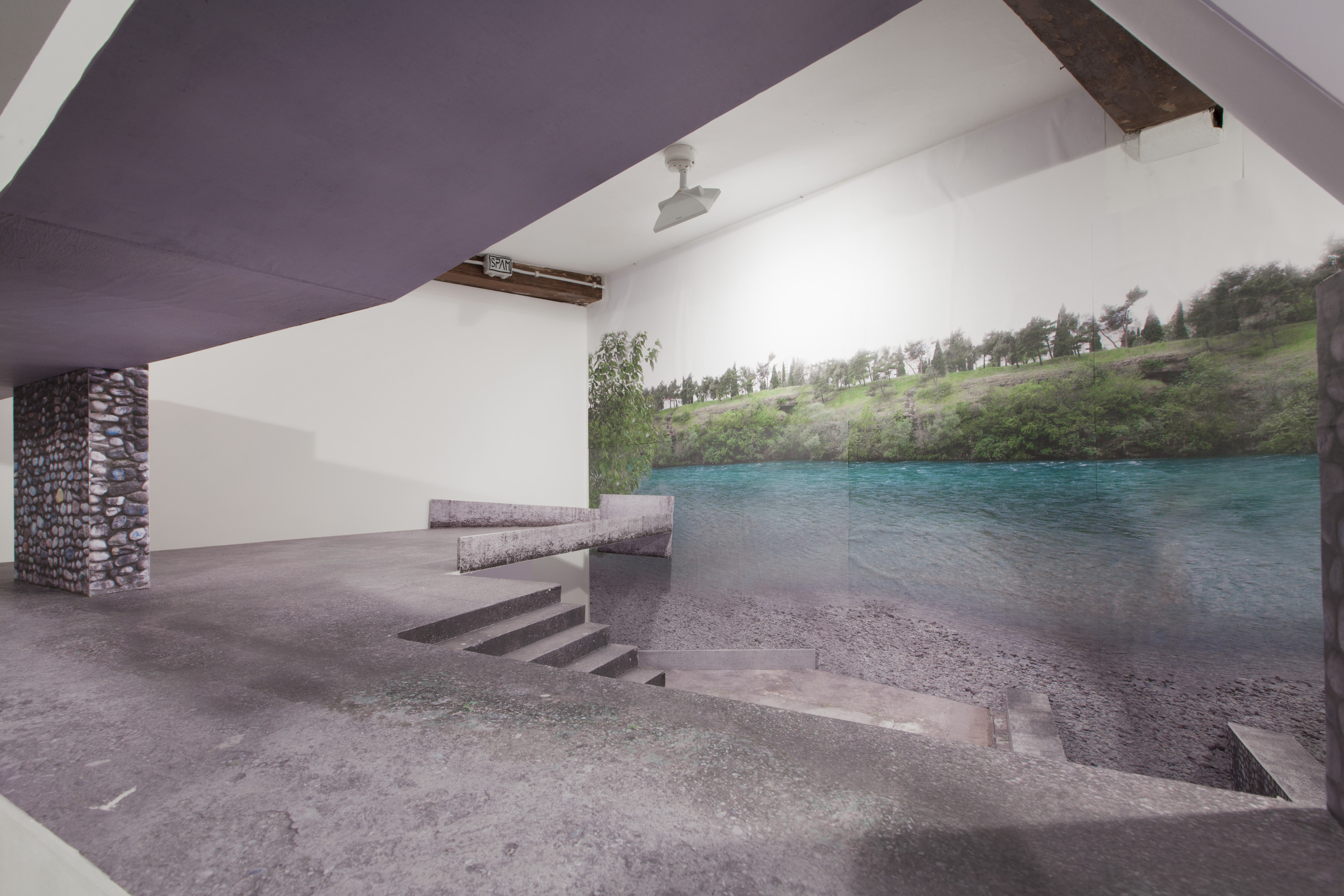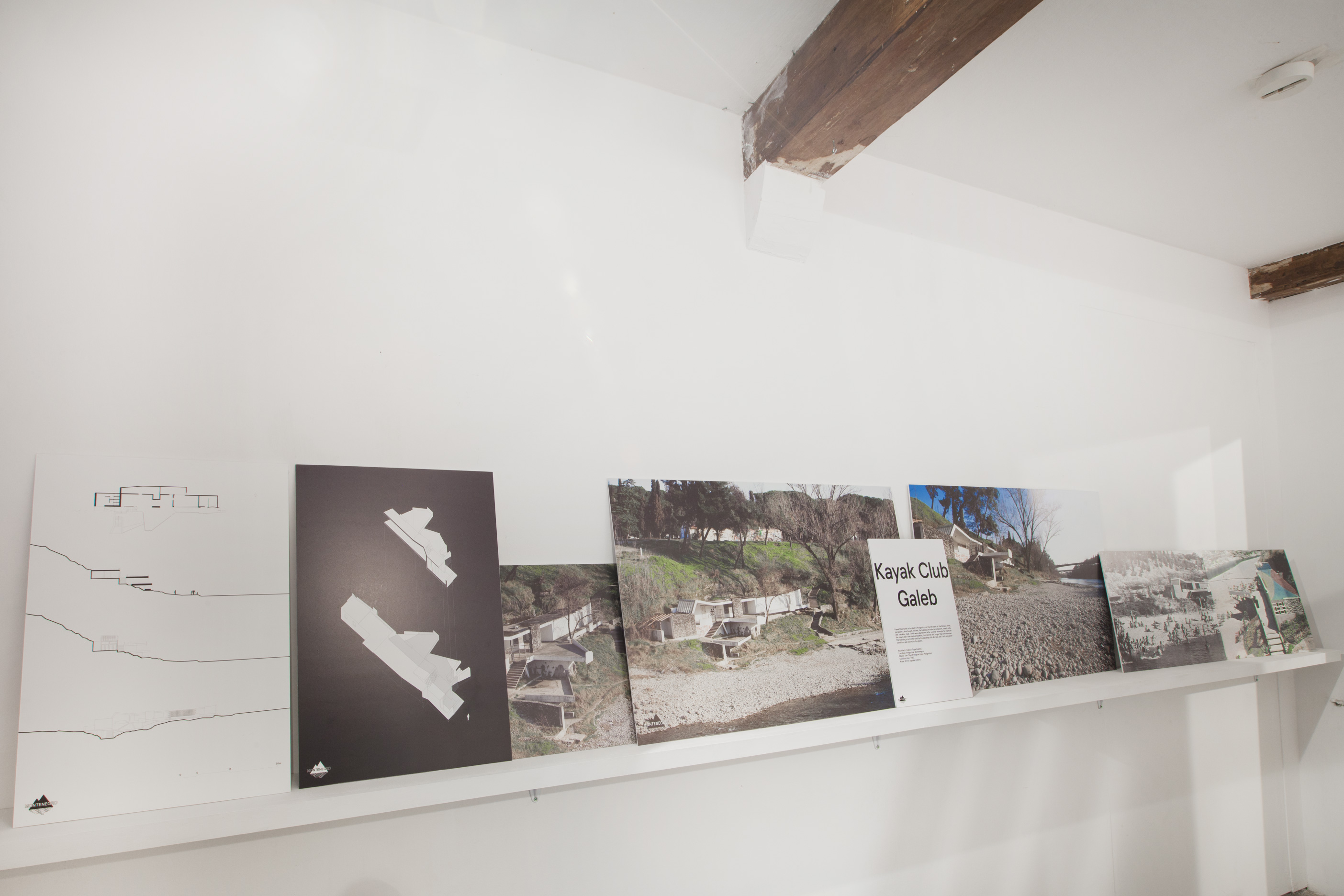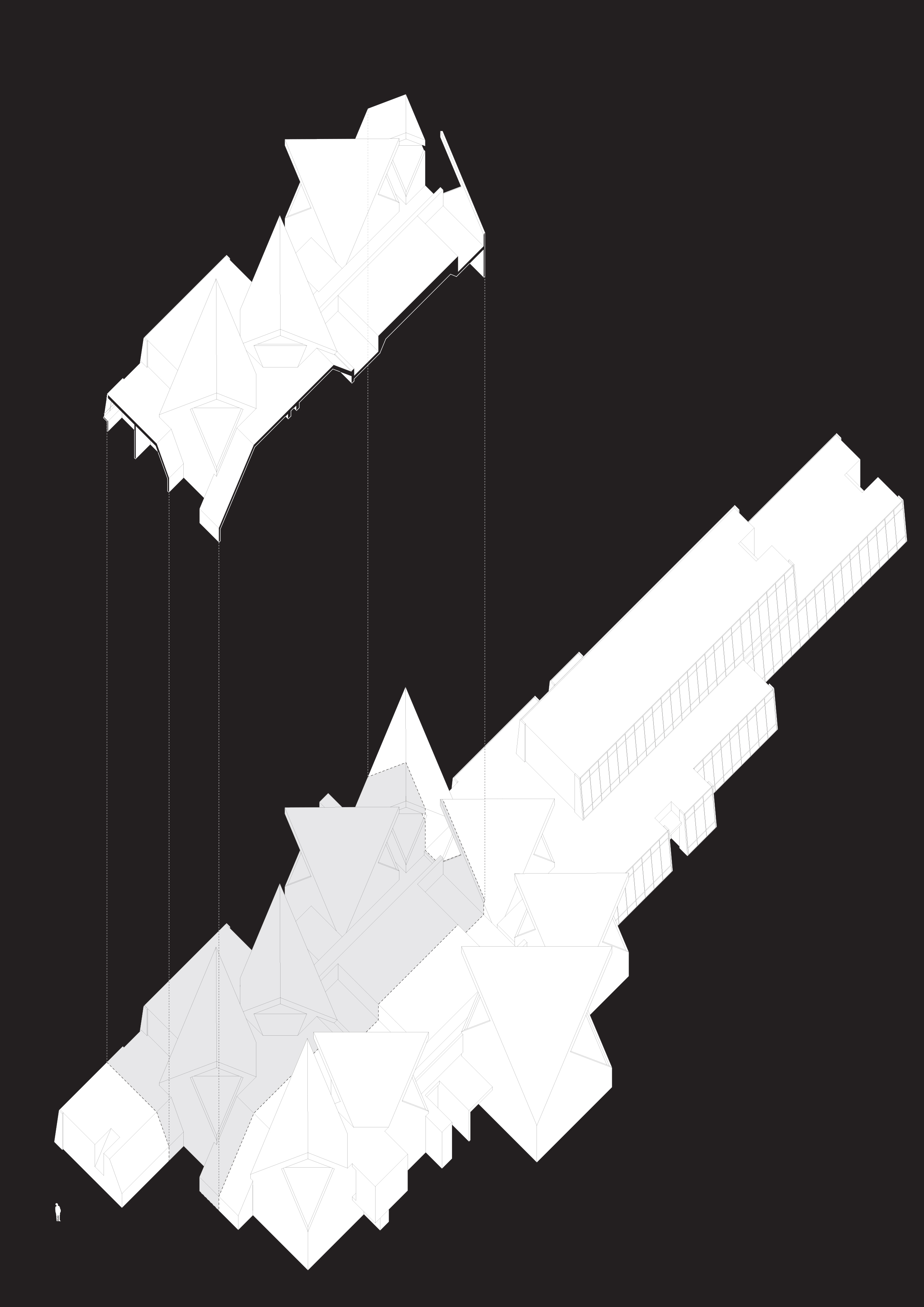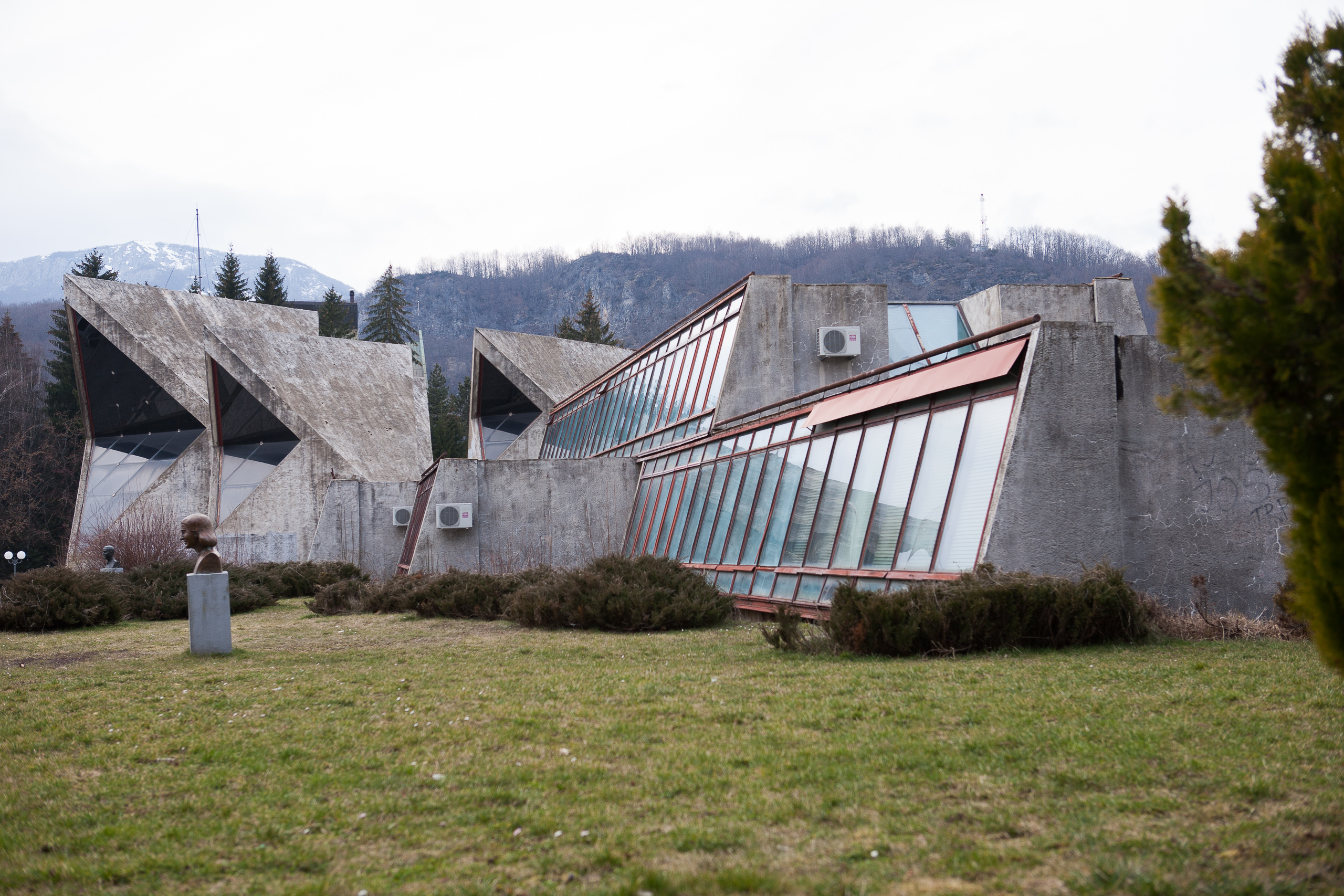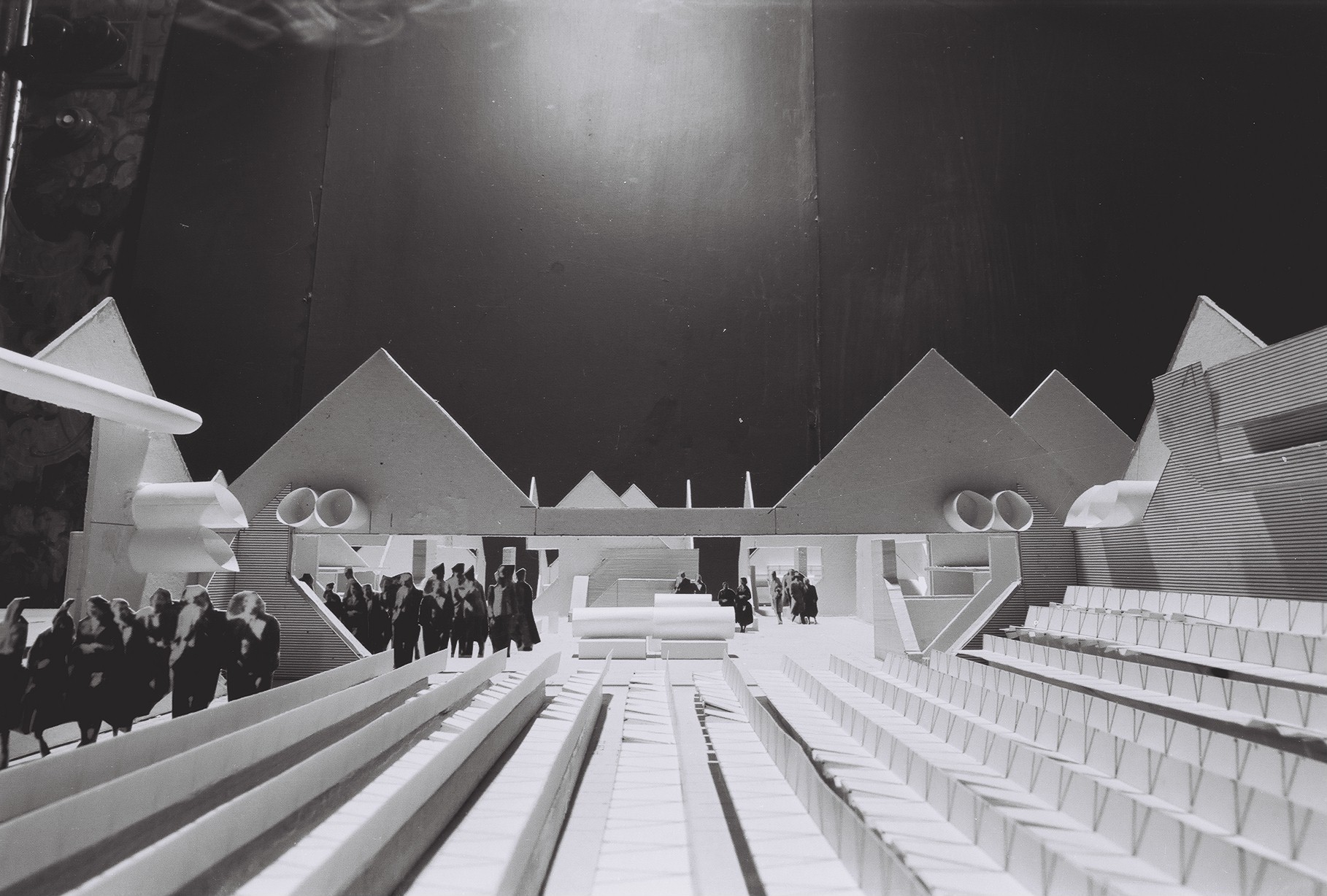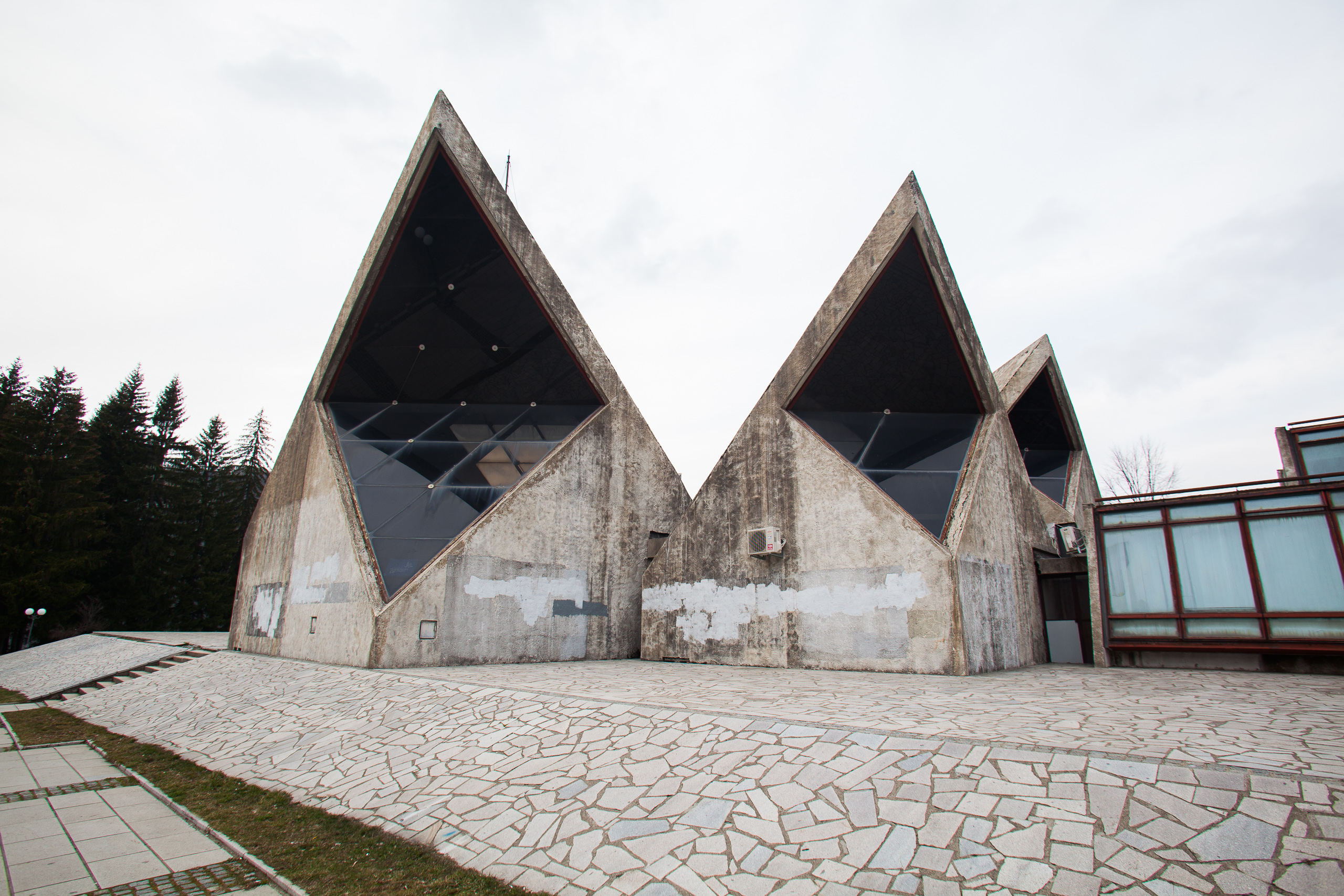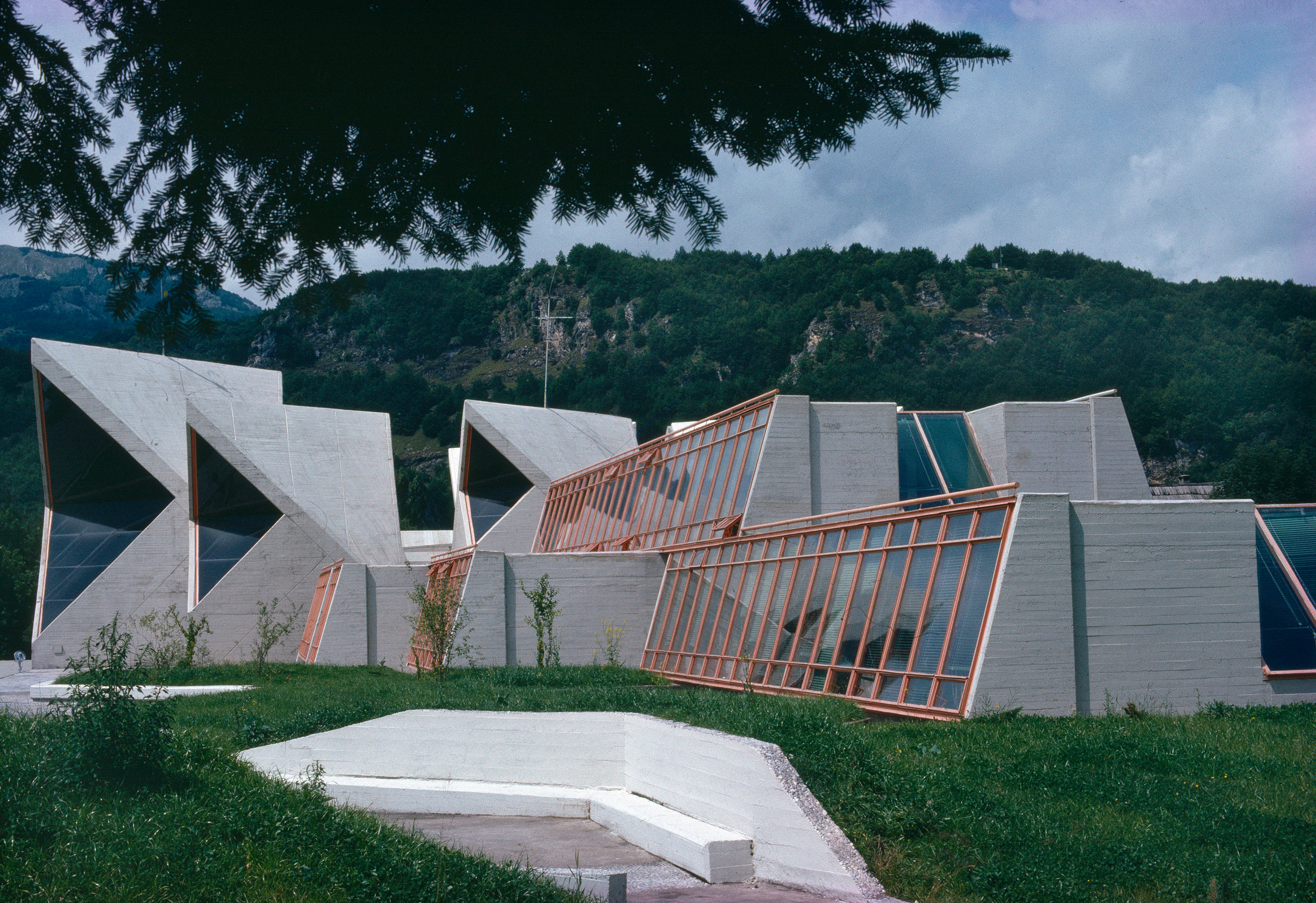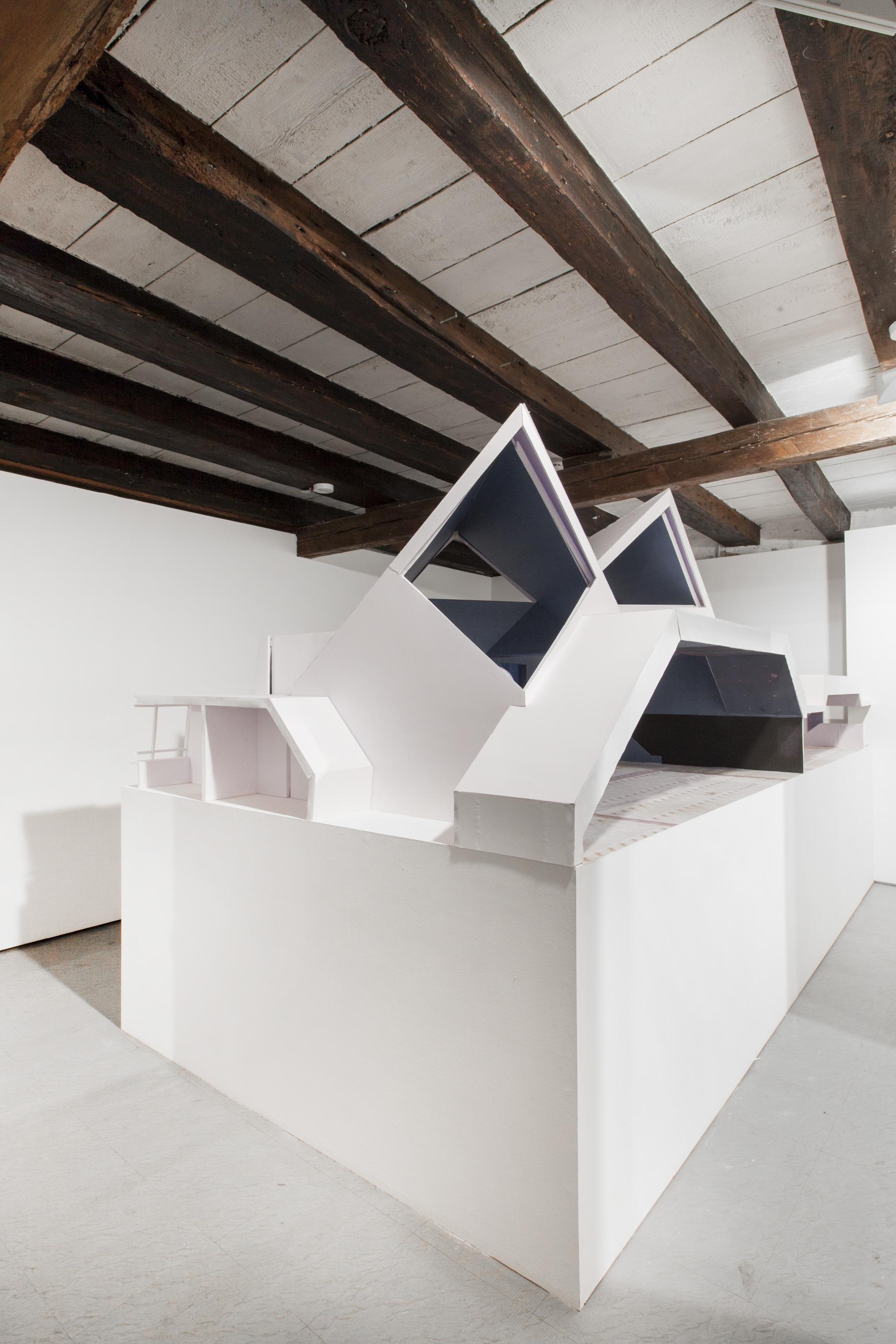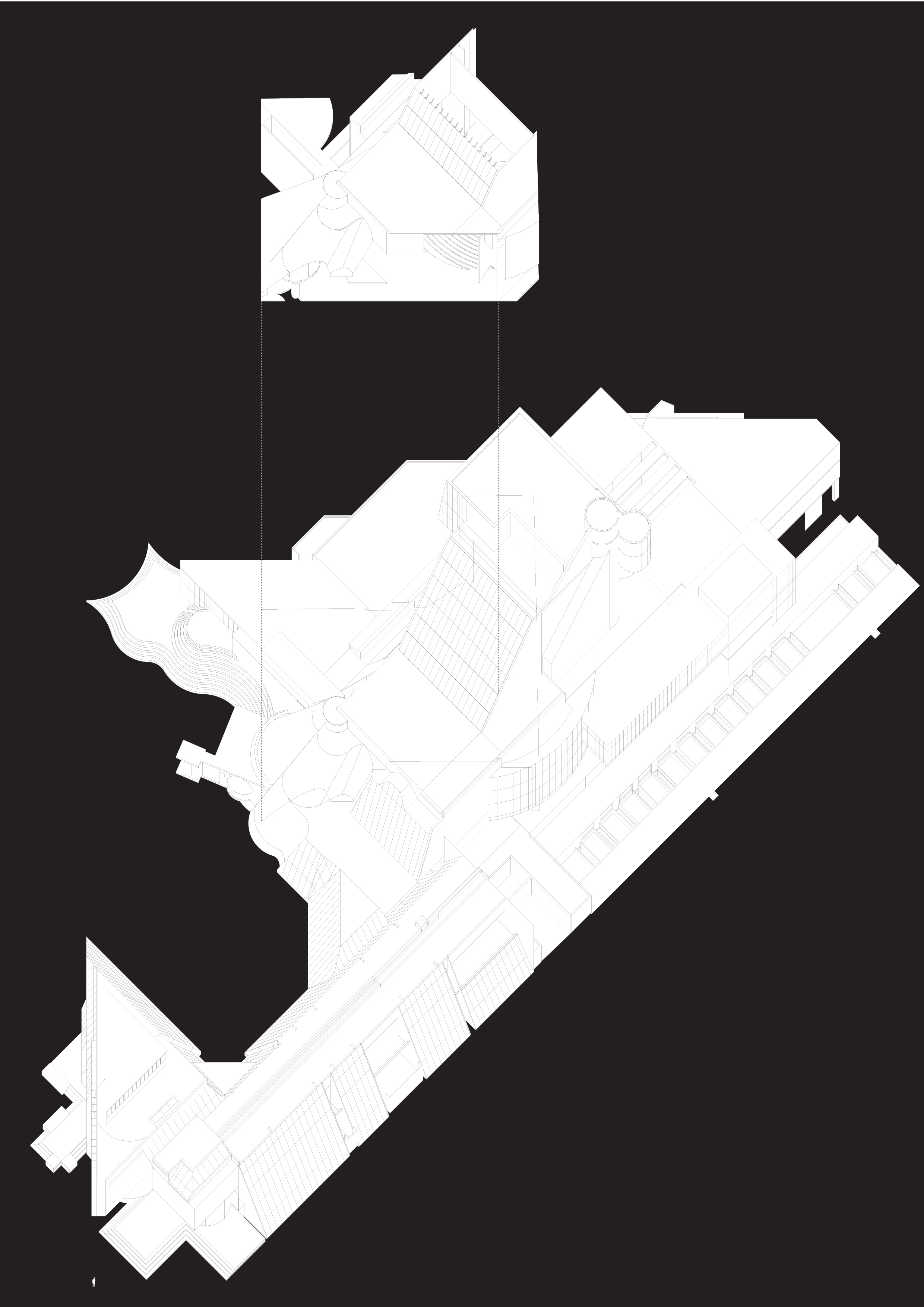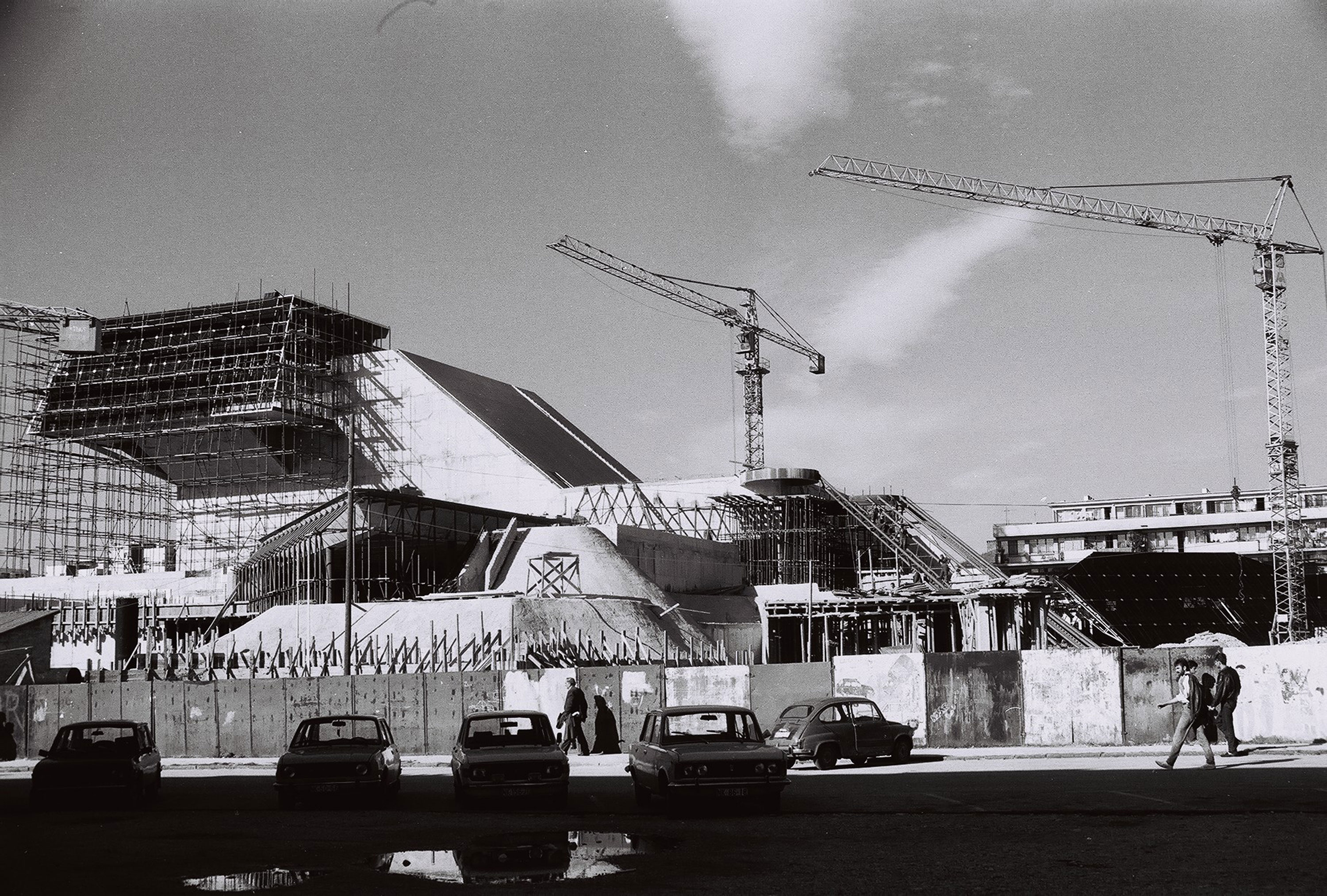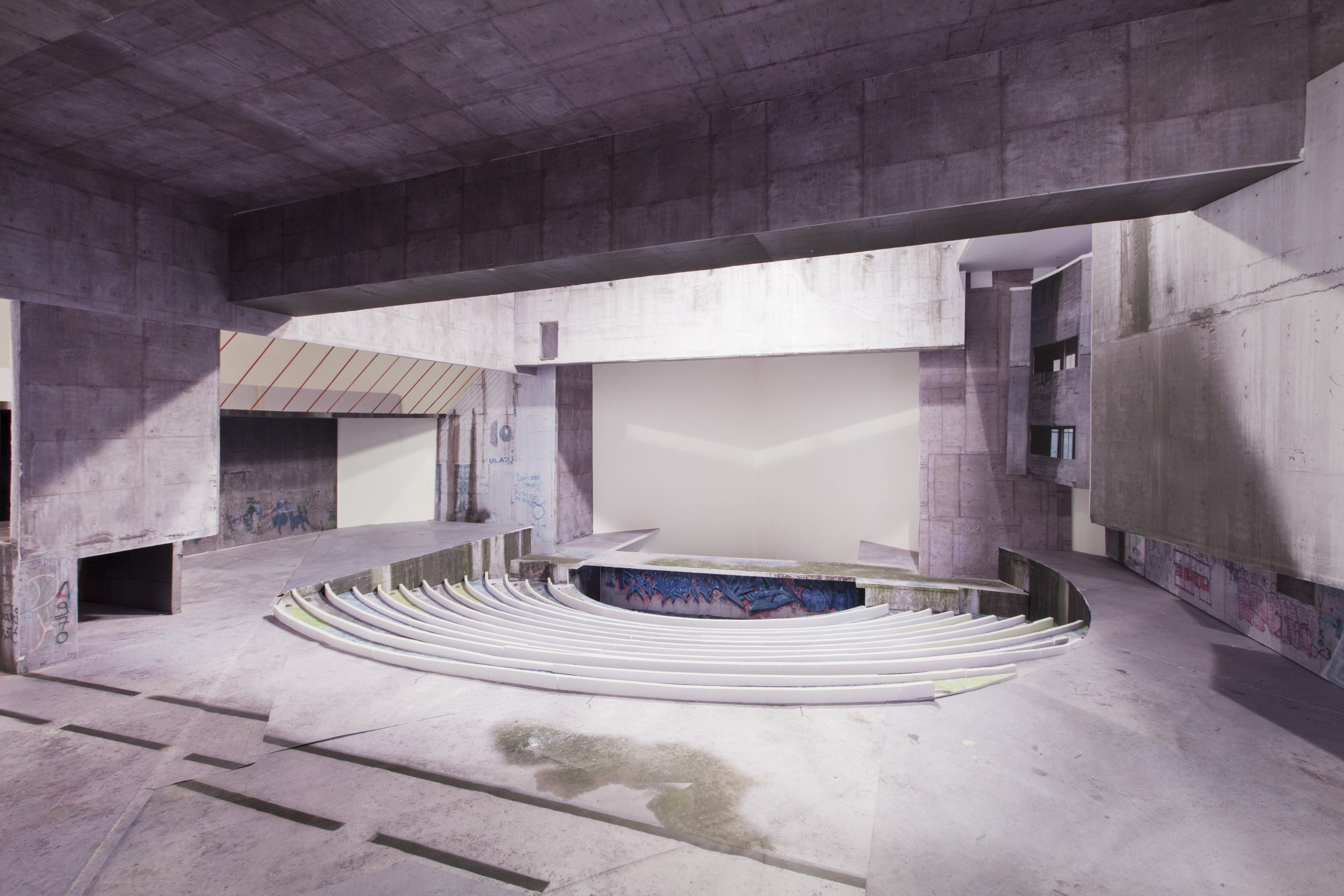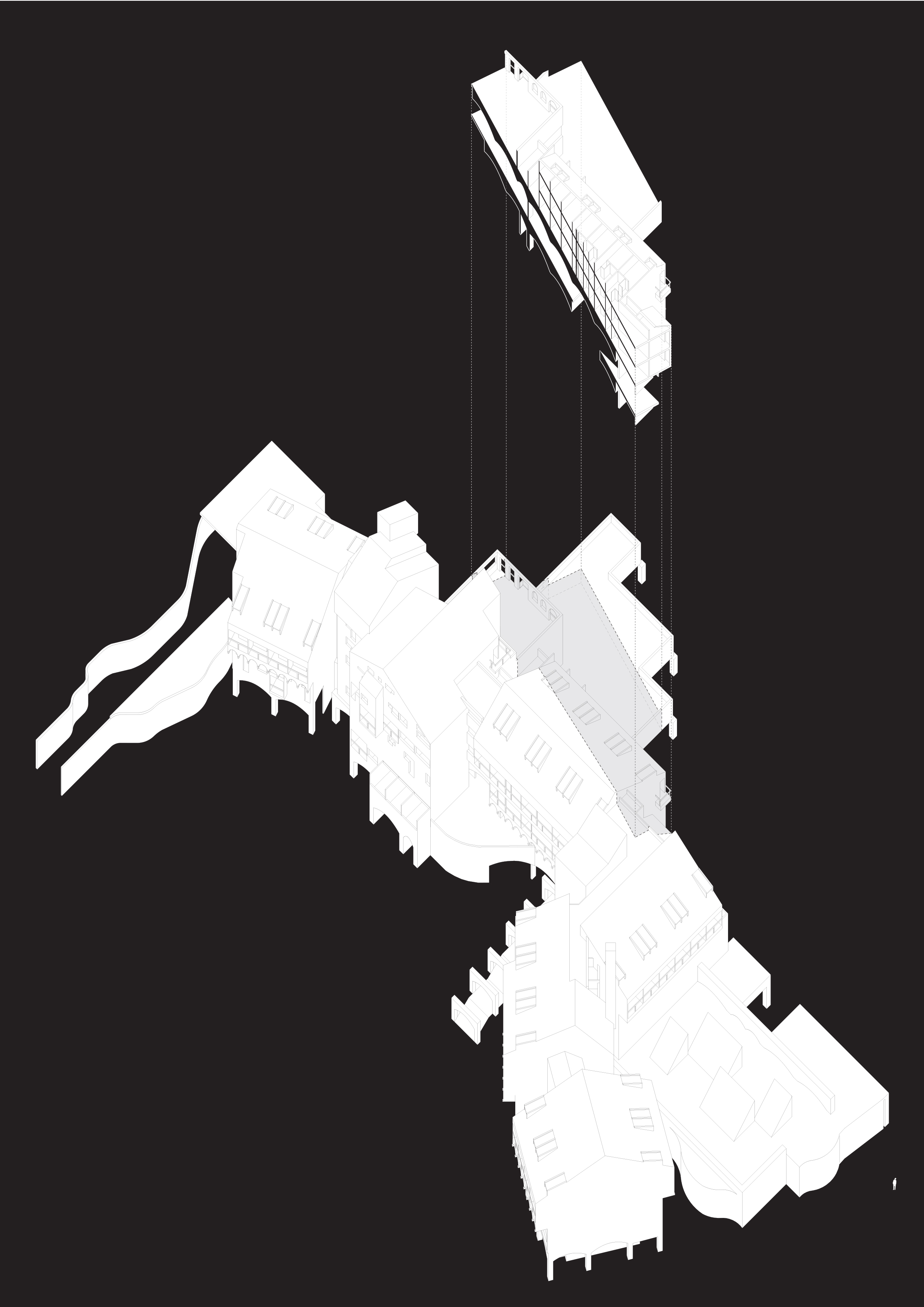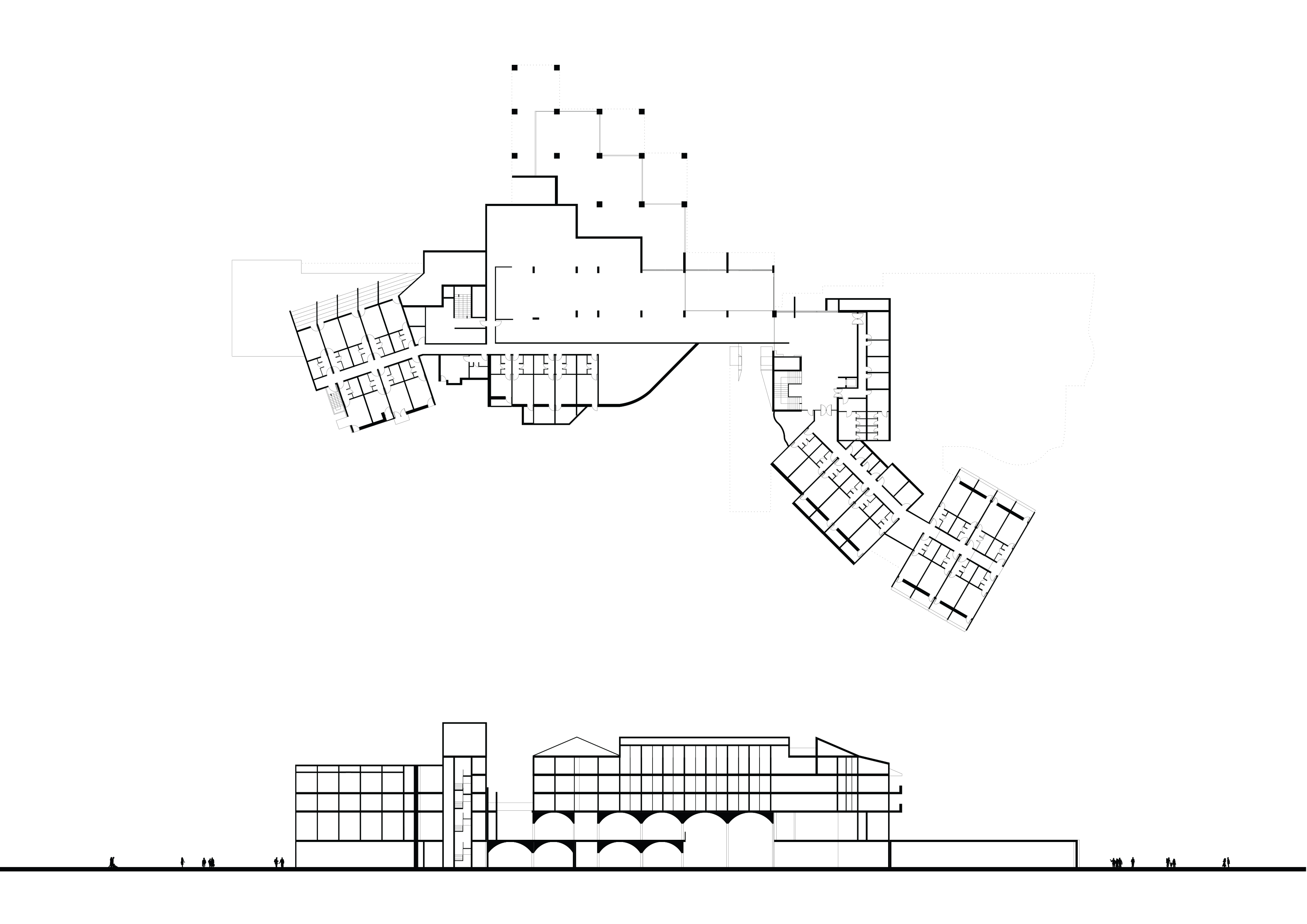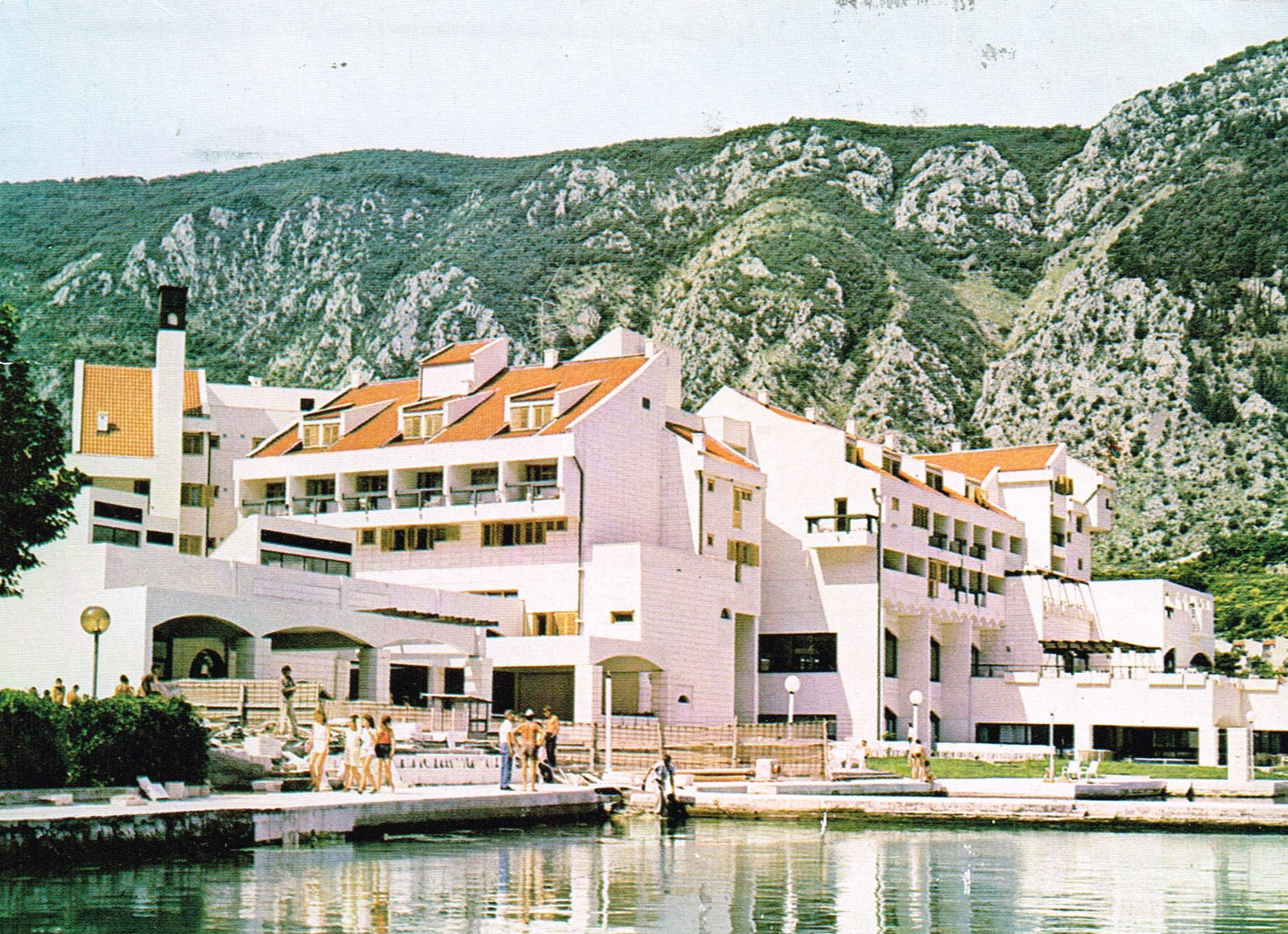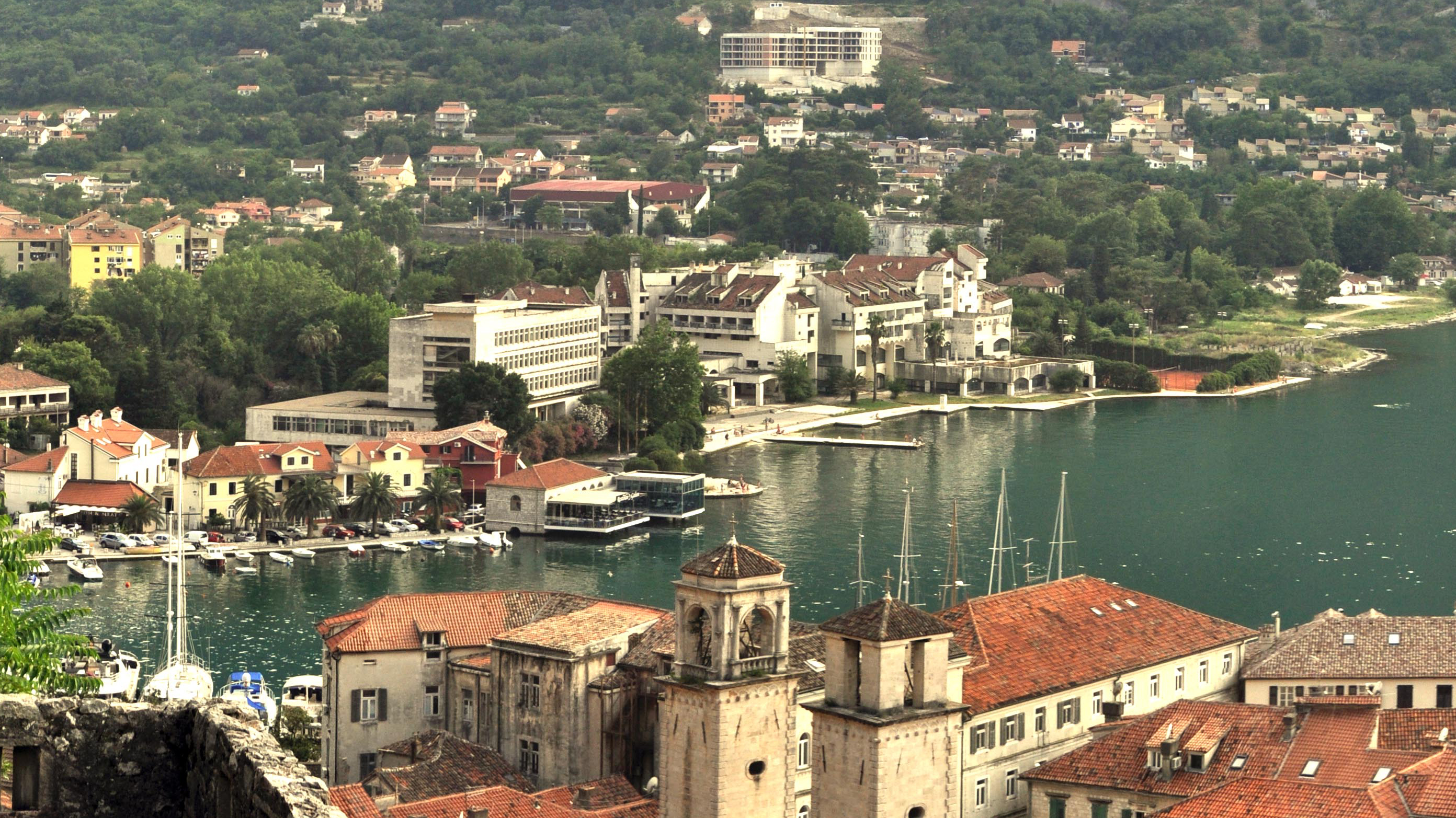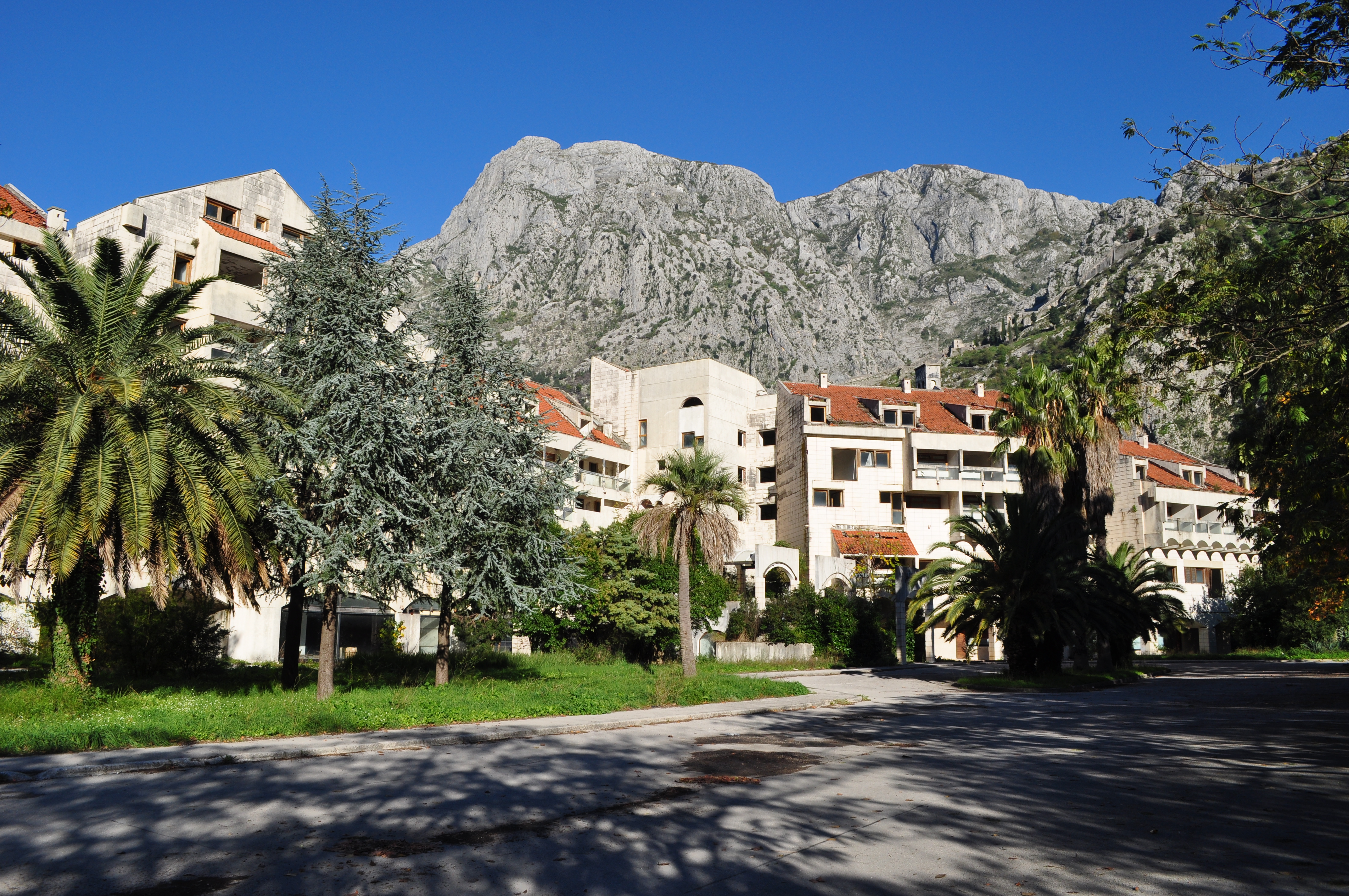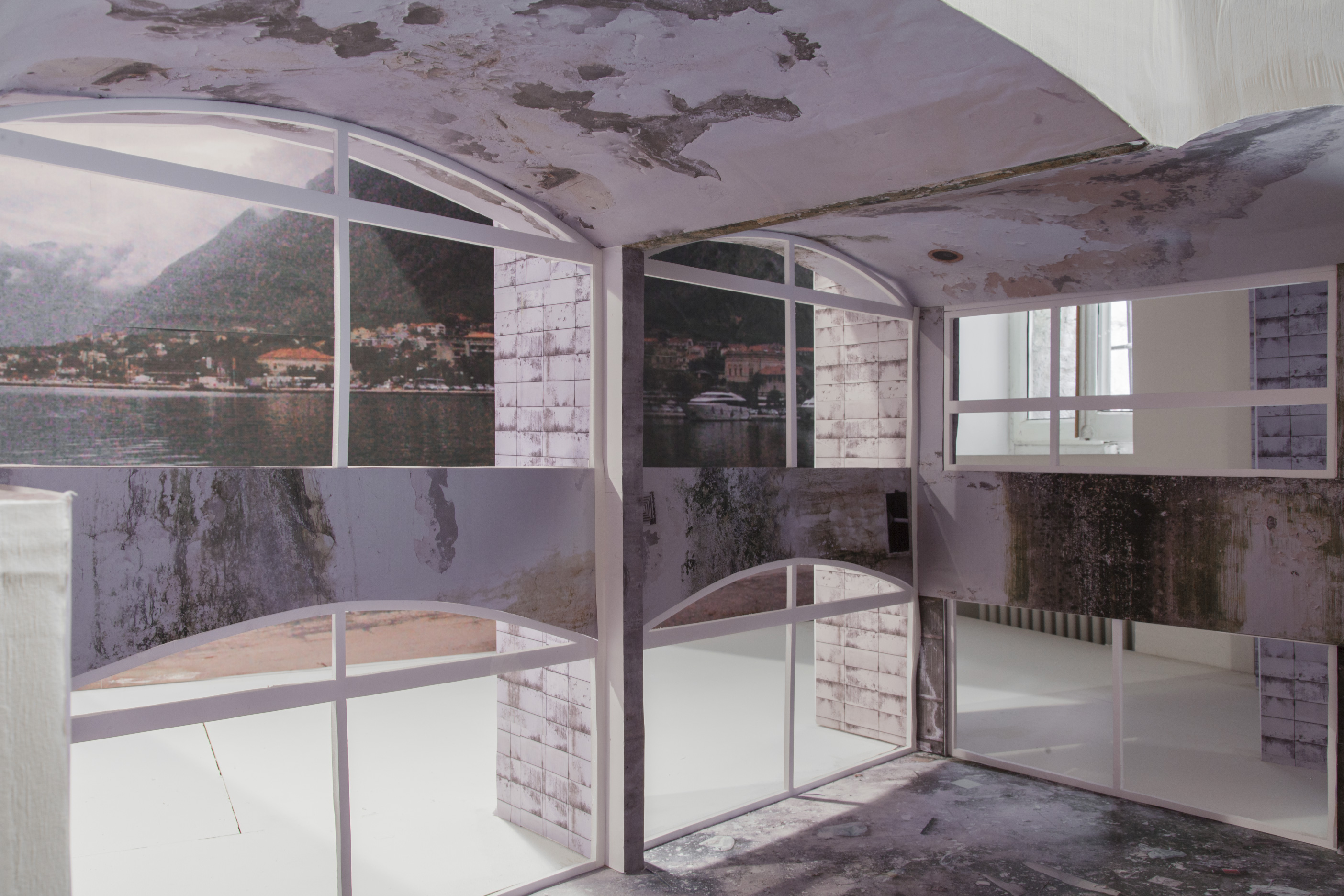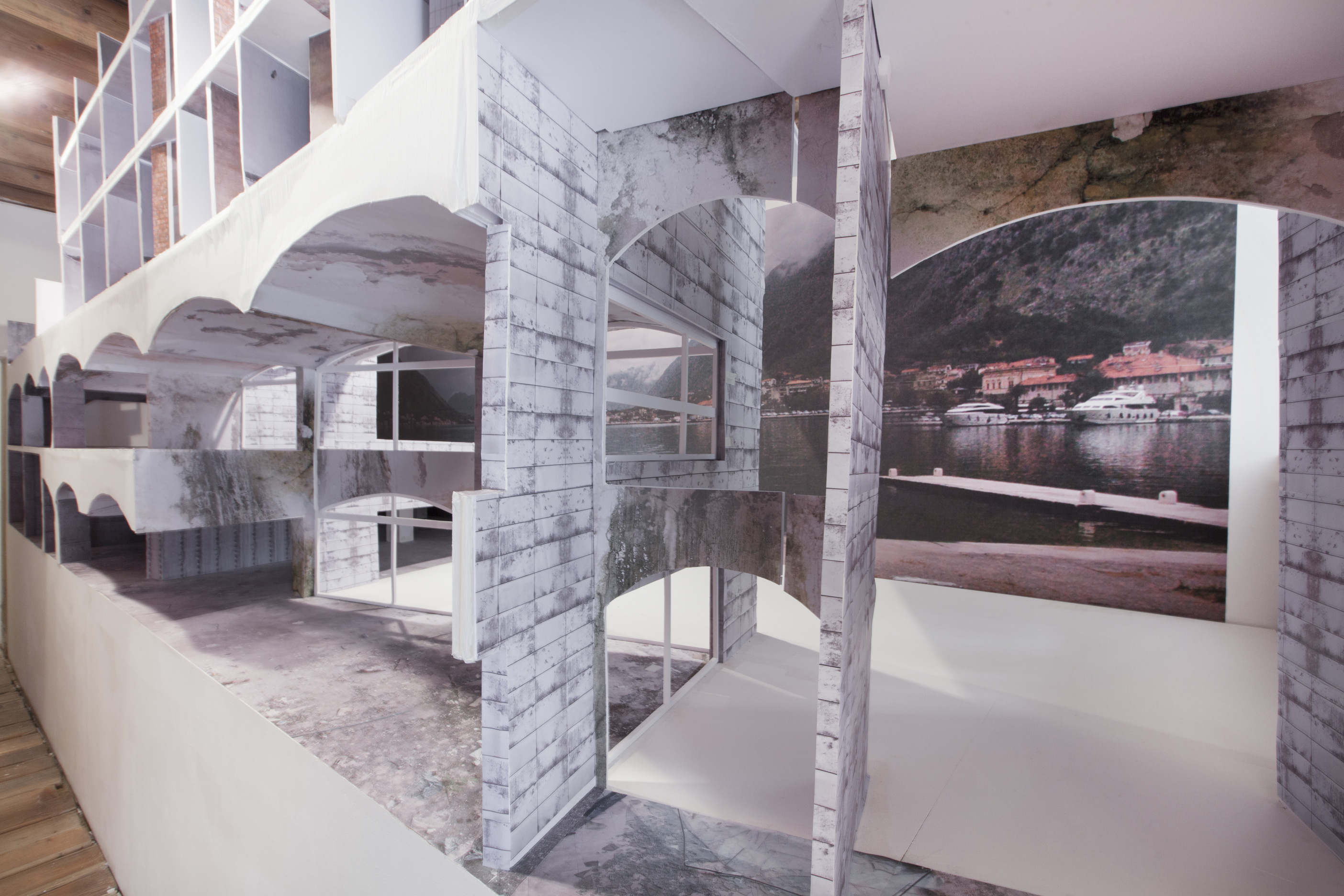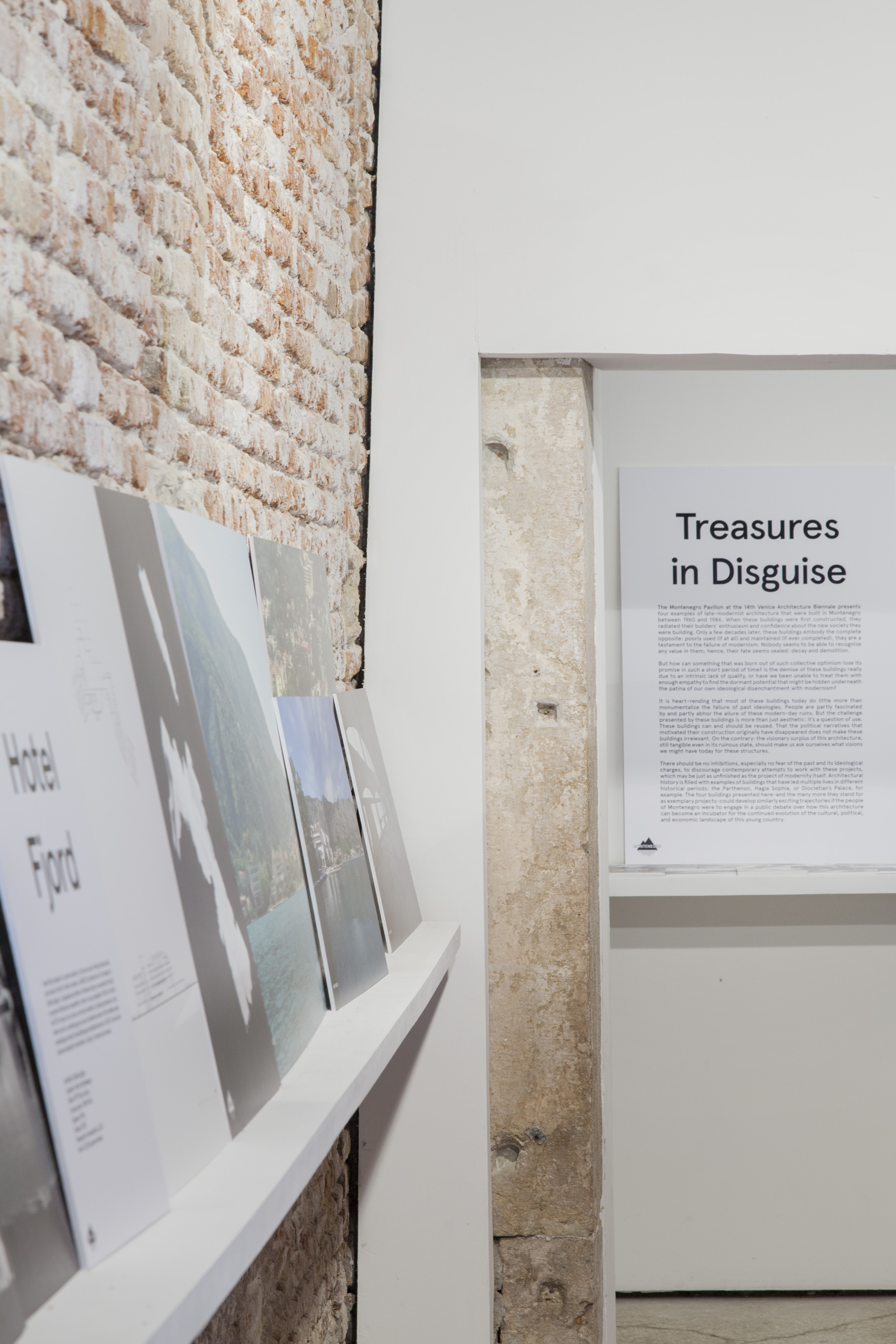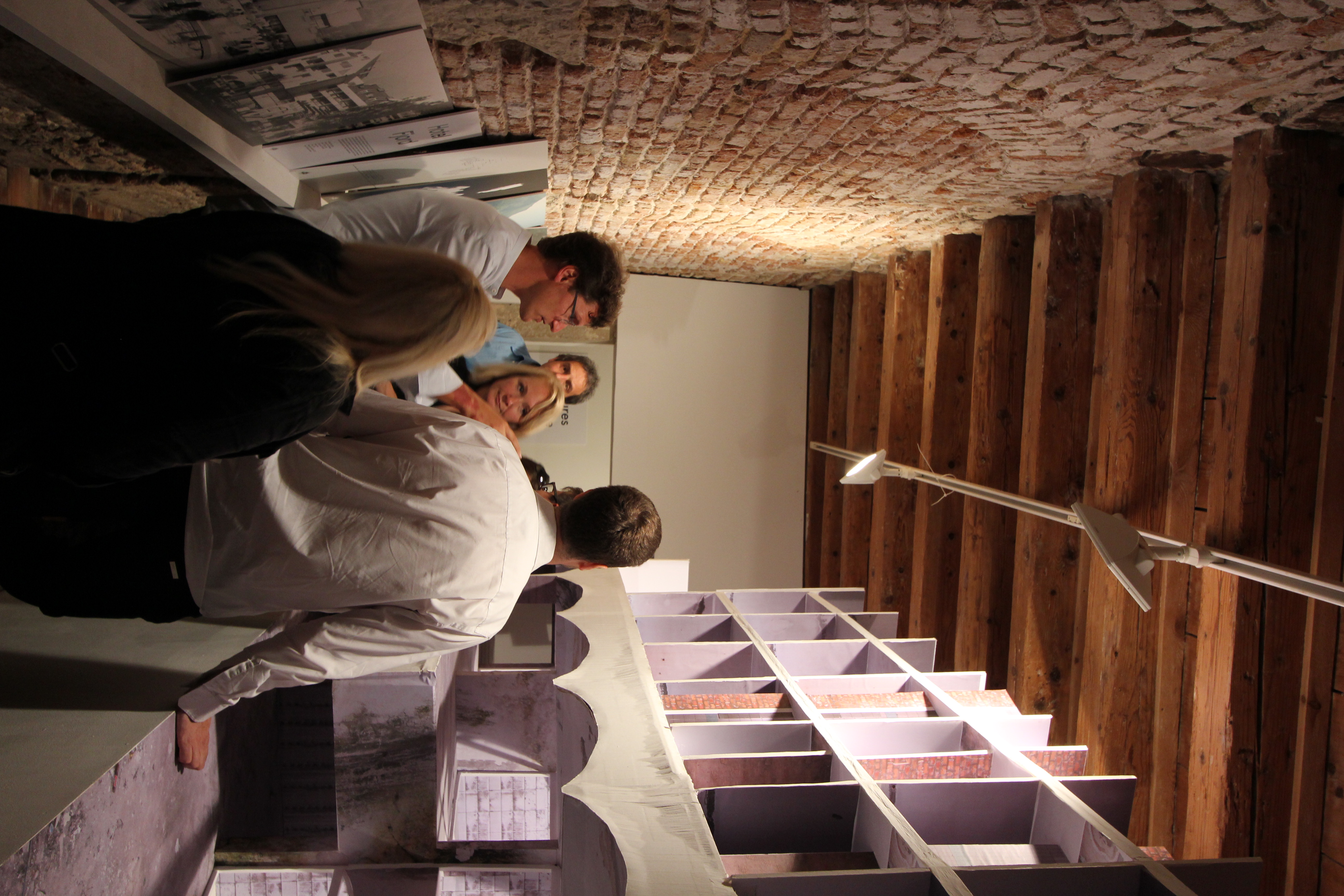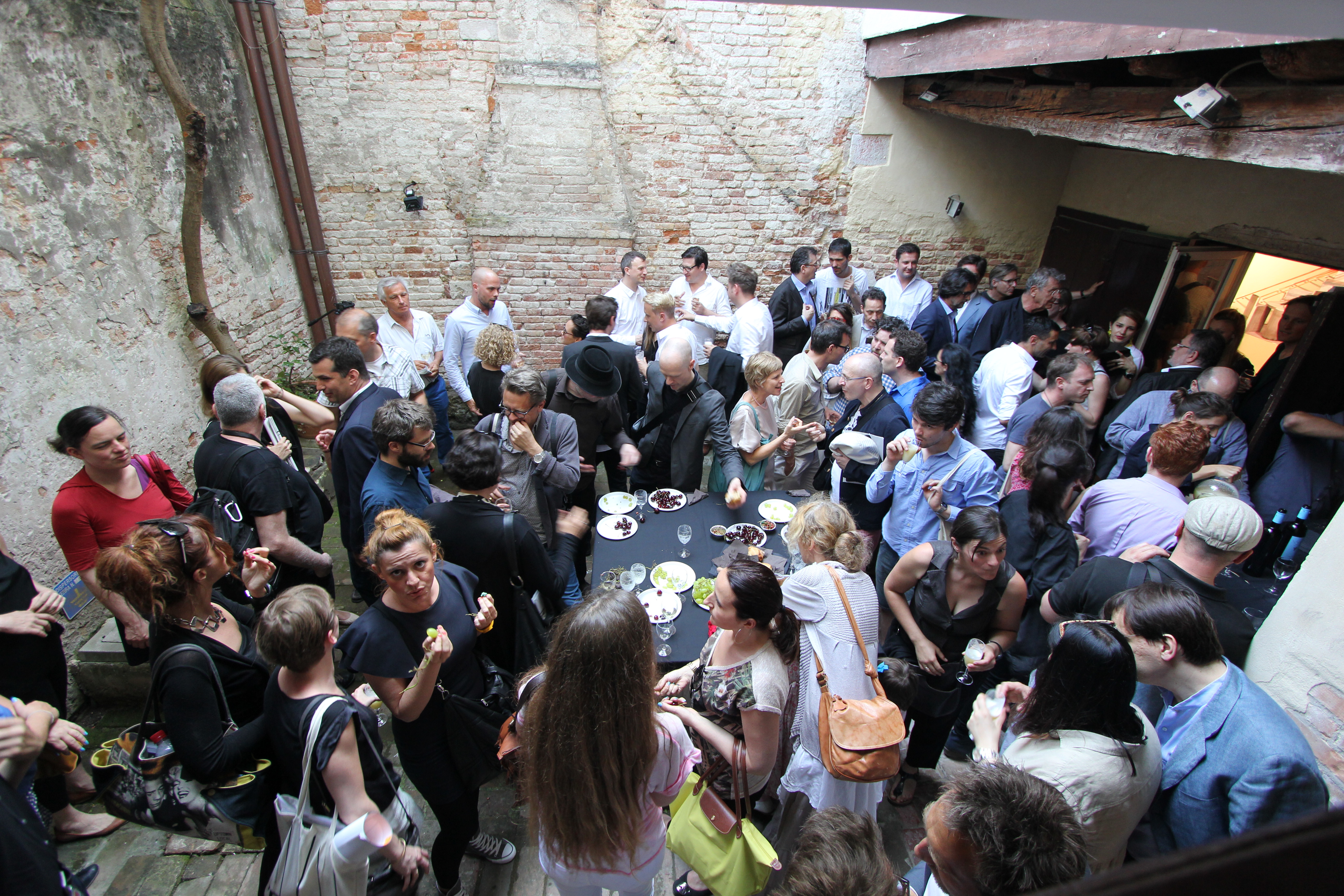Treasures in Disguise La Biennale di Venezia 2014
Treasures in Disguise Montenegro pavilion
14th Venice Architecture Biennale
Type
Exhibition
Design
2013-2014
TEAM
Curators
Dijana Vučinić (DVARP), Boštjan Vuga (SADAR+VUGA), Simon Hartmann (HHF Architects), Ilka & Andreas Ruby (Ruby Press), and Nebojša Adžić
Collaborators
Ivana Barišić, Alban Bislimi, Marija Ičević, Nathalie Janson, Zdenek Liška, Jovana Miljanić, Chiara Paone, Jure Sadar, Laura Sattin, Jelena Šćepanović, Jacopo Tiso, Jelena Vučić, Nina Vuga, Elena Zadra, Borislav Vukićević
Identity, graphic, and web design: Belgrad (Julian Schubert, Elena Schütz, Leonard Streich, Pieterjan Gandry)
Photographs: Luka Bosković, Ivan Čojbašić, Ana Crnić, Jelena Đurđic, Jovana Miljanić, Patricia Parinejad, Jacopo Tiso
The Montenegro Pavilion at the 14th Venice Architecture Biennale presents four examples of late-modernist architecture that were built in Montenegro between 1960 and 1986. When these buildings were first constructed, they radiated their builders’ enthusiasm and confidence about the new society they were building. Only a few decades later, these buildings embody the complete opposite: poorly used (if at all) and maintained (if ever completed), they are a testament to the failure of modernism. Nobody seems to be able to recognize any value in them; hence, their fate seems sealed: decay and demolition.
But how can something that was born out of such collective optimism lose its promise in such a short period of time? Is the demise of these buildings really due to an intrinsic lack of quality, or have we been unable to treat them with enough empathy to find the dormant potential that might be hidden underneath the patina of our own ideological disenchantment with modernism?
It is heart-rending that most of these buildings today do little more than monumentalize the failure of past ideologies. People are partly fascinated by and partly abhor the allure of these modern-day ruins. But the challenge presented by these buildings is more than just aesthetic: it’s a question of use. These buildings can and should be reused. That the political narratives that motivated their construction originally have disappeared does not make these buildings irrelevant. On the contrary: the visionary surplus of this architecture, still tangible even in its ruinous state, should make us ask ourselves what visions we might have today for these structures.
There should be no inhibitions, especially no fear of the past and its ideological charges, to discourage contemporary attempts to work with these projects, which may be just as unfinished as the project of modernity itself. Architectural history is filled with examples of buildings that have led multiple lives in different historical periods: the Parthenon, Hagia Sophia, or Diocletian’s Palace, for example. The four buildings presented here—and the many more they stand for as exemplary projects—could develop similarly exciting trajectories if the people of Montenegro were to engage in a public debate over how this architecture can become an incubator for the continued evolution of the cultural, political, and economic landscape of this young country.
The exhibition design for Treasures in Disguise consists of four large, atmospheric section models of the four buildings on display: Hotel Fjord, Dom Revolucije, Spomen Dom, and Kayak Club Galeb. At a scale of 1:10, these models will fill up approximately half of each of the four rooms of the Montenegro Pavilion at the Palazzo Malipiero. They are large enough for visitors to stick their heads in them, providing an opportunity to explore the spatial qualities of these buildings and of late-modernist architecture in former Yugoslavia. Glued on the models are photographic details depicting the current material textures, colors and decay of the buildings. The walls behind the models are wallpapered with atmospheric, large-scale photographs of the interiors or surroundings of the buildings. By fusing together the three-dimensional models and two-dimensional photographs into an almost seamless environment, the exhibition not only celebrates the architectural qualities of these buildings, but also exposes the deplorable condition that they’re in today. Panels with short texts introducing the buildings, old and new photographs, and architectural drawings on the opposite walls provide the essential information about each of the projects.
The exhibition scenography wants to provide visitors the opportunity for a close encounter with the projects in order to emphasize their spatial qualities and potential as buildings, to introduce a different way of looking at this architecture. In the recent past, these structures have predominantly been studied through the lens of their ideological origin and programming. But given that these ideologies are no longer dominant in Montenegro today, this architecture risks being branded as a concrete necropolis of the failure and breakup of Yugoslavia, irreconcilable with Montenegro’s transition to a market economy. This haunting legacy makes it difficult to repurpose these buildings. With this exhibition, we’d like to add to the discourse of late-modernist architecture in Yugoslavia by exploring them primarily as buildings; we want to make them present as tangible spatial structures, so that you can imagine what it’s like to be in them and what they might offer Montenegro in the future.
Buildings:
Dom Revolucije
Architect: Marko Mušić
Location: Nikšić, Montenegro
Years of construction: 1979-1989, unfinished
Area (built): 20,468 square meters
The original design brief for the Dom Revolucije (“Revolution Home” in English) stipulated that the building’s surface area should measure 7,230 square meters. However, during the design process, the surface area tripled to 21,738 square meters. Dom Revolucije was built as a memorial to those who died during the Second World War and as a landmark and cultural center for the city of Nikšić. At the time, Nikšić was one of the industrial centers of Yugoslavia. Construction work on the building stopped in 1989.
Hotel Fjord
Architect: Zlatko Ugljen
Location: Kotor, Montenegro
Year of construction: 1986
Area: 13,360 square meters
Hotel Fjord stands in a prime location, at the very end of Boka Kotorska Bay and close to Kotor’s historic center, a UNESCO-protected site. The design by Zlatko Ugljen, a Yugoslavian architect of Bosnian origin, was selected through an open architecture competition. When it was completed in 1986, the hotel had 155 rooms, four suites, and many amenities, including restaurants, bars, tennis courts, a swimming pool, and a conference center. After nineteen years operating as a hotel, the building was privatized and sold. In 2005, it was closed down and slated for demolition. Today, it is empty and unused.
Kayak Club “Galeb”
Architect: Vukota Tupa Vukotić
Location: Podgorica, Montenegro
Year of construction: 1960
Area: 411.50 square meters
Kayak Club “Galeb” is located in Podgorica, on the left bank of the Morača river, just above Labud beach. Initially, the building included a restaurant, beach café, and kayaking club. Galeb was abandoned after several attempts to maintain the beach bar; the original kayaking club did not last longer than one summer. The building is currently used by the kayaking club Morača, but it is in very poor condition and closed to the public.
Spomen Dom
Architect: Marko Mušić
Location: Kolašin, Montenegro
Year of construction: 1976
Area: 3,220 square meters
Spomen Dom (“Memorial Home” in English) was built in 1976. It is located in the city center of Kolašin, in the northern part of Montengro. It was built to commemorate the first assembly of the National Anti-Fascist Council for the National Liberation of Montenegro and Boka (the southern region of Montenegro). In the following years, Spomen Dom was used as a cultural and administrative center for Kolašin and the surrounding area. Up until the early nineties, local authorities were in charge of the building’s maintenance. Now that its maintenance has been removed from the region’s budget, Spomen Dom is no longer looked after and has fallen into disrepair. A few years ago, the local authorities considered demolishing it in order to build a new tourist complex on the site. However, the plan to demolish Spomen Dom has been stalled by the economic crisis. The building is still used today for municipal administration and by local political parties. It is also considered one of Montenegro’s most beautiful examples of post-war architecture.


